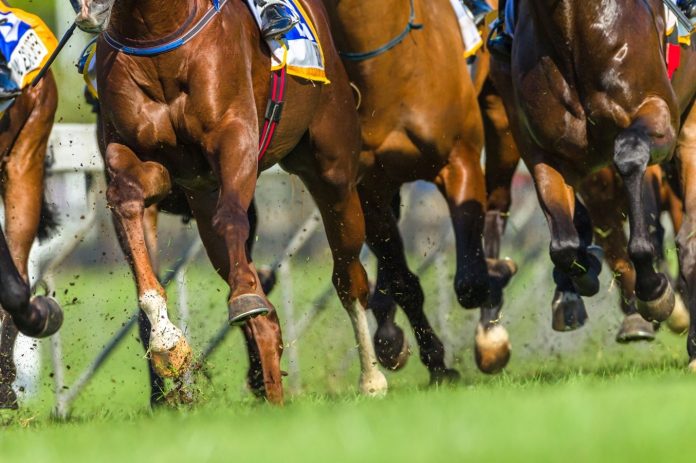
You’ve probably heard the term “handicapping” thrown around in horse betting circles. But what does it really mean? And more importantly, how can it give you an edge at the track?
Handicapping, in its simplest form, is the art of predicting horse races. It’s about analyzing data, understanding the variables, and making informed bets. But there’s more to it than meets the eye.
In this article, we’re going to dive deep into the world of handicapping. We’ll uncover its secrets, explore its intricacies, and give you the tools you need to start making smarter bets. So, strap in and get ready to become a more savvy horse bettor.
Definition of Handicapping
As you delve deeper into the world of horse betting, you’ll encounter the term handicapping. So, what does this word really mean? Primarily, handicapping is the art of predicting horse races based on analyzing relevant data and information. It’s a methodical approach that combines keen observation, in-depth analysis of variables such as the horse’s form, track conditions, and jockey’s skills, among other things typically displayed on available racecards.
As a handicapper, your objective is to determine probabilities by analyzing these variables and making informed horse bets. In essence, handicapping helps create a level playing field in horse betting. Your ability to decipher this data and outsmart the odds is the ultimate skill.
Key Factors to Consider in Handicapping
In your quest to master the complexities of horse racing handicapping, it’s essential to focus on a handful of key factors. You’ll find these practical pointers invaluable as you fine-tune your skillset.
Class of the Horse
The term “class” in horse racing refers to the calibre or quality of a horse, and it’s one of the most significant factors to consider when handicapping. To determine a horse’s class, you look at elements like past race performances, earnings, and the levels of competition it’s faced.
A form guide can provide a deeper insight into a horse’s class, outlining its past performance in races of the similar calibre and conditions. This information can paint a pretty complete picture.
Let’s not forget that horses, just like folks, have their good and bad days. A sudden drop in class might indicate underlying issues while a rise can suggest improvements in form. Always stay vigilant and pay close attention to these changes.
Jockey’s Performance
A jockey’s role in racing success shouldn’t be underestimated. These athletes know their horses well, understanding their strengths, weaknesses and quirks. A talented jockey can coax the best from their horse, making the difference between winning and losing.
Be sure to consider the jockey’s past performance at similar tracks and conditions. Also, study the synergy between the horse and the jockey. A strong bond can sometimes be an X factor in races.
Trainer’s Track Record
You’re not mistaken if you’re thinking that the trainer’s role is as vital as the jockey’s. They are the masterminds behind the scenes, preparing horses for races. A trainer with a long history of success usually has a knack for getting their horses in top physical condition and ready for their races.
When handicapping, you’ll need to consider the trainer’s track record, especially at the type of race being run. Look for patterns in wins and losses that could influence the horse’s performance. Past success in similar conditions can be a promising sign.
As you weave these factors into your handicapping routine, always remember – no two horse races are the same. It’s a dynamic sport with many variables, so always be prepared for the unpredictable. Remember, it’s not all about picking the winner but making the most informed decision possible.
Advanced Handicapping Techniques
Alright, so you’ve got the basics down and now it’s time to delve into the nitty-gritty. This section aims to unveil three key advanced handicapping techniques: Using Speed Figures, Evaluating Workouts, and Studying Pedigrees. By mastering these techniques, you’ll become a more adept bettor, ready to tackle even the most challenging horse races.
Using Speed Figures
Speed Figures are an essential tool for any seasoned bettor. They provide a numerical representation of a horse’s performance in previous races, and when used correctly, can predict future performances.
The concept is simple: the higher the speed figure, the faster the horse’s previous races. There is, however, a catch: speed figures don’t tell the whole story. While they reflect a horse’s performance, they don’t account for variables like track conditions, competition, or disruptions during the race. You’ll need to factor in these elements to get a clearer picture.
Evaluating Workouts
Aside from race day performances, paying close attention to a horse’s workout results can offer insightful clues. It’s like a peek behind the scenes, revealing not just the horse’s fitness level but also its focus and determination.
Workouts typically consist of short bursts of intense exercise, aimed to prepare the horse for the rigors of an actual race. When evaluating workouts, consider factors such as the horse’s demonstrated speed, how long it sustains its top speed, and how quickly it recovers.
Studying Pedigrees
Simply put, pedigrees are family trees. In horse racing, pedigrees can unfold a wealth of information about a horse’s inherent abilities and potential performance. Pedigree research can be complex, but it’s genuinely rewarding. Here are the basics:
- Sire Performance: look at the performance of the horse’s father, known as the sire. A sire with a track record of producing successful offspring tends to imply a better-than-average chance of success for its progeny.
- Dam Performance: likewise, consider the mother or the dam’s racing history and her production history. A dam that has produced several winning horses indicates superior genetic quality.
- Family Success: delve deeper into the horse’s family tree. Look at its siblings, grandparents, and even cousins if possible. Numerous successful relatives typically predict a higher probability of success for the horse.
Conclusion
Mastering the art of handicapping in horse betting doesn’t happen overnight. But with the right approach and dedication, it’s within your reach. Remember, the class of the horse, the jockey’s performance, and the trainer’s track record are all crucial factors. Advanced techniques like using Speed Figures, evaluating workouts, and studying pedigrees can give you that extra edge.
Developing a winning strategy is key. It starts with setting a budget and managing your bankroll effectively. Don’t forget the importance of keeping records of your betting history. This data-driven approach can help you identify trends and areas for improvement.
Horse betting is a game of skill and strategy. With the secrets of handicapping now in your hands, you’re well on your way to making more informed betting decisions. So go ahead, put these insights to use and may the odds be ever in your favor.




![Bing Crosby Stakes Odds & Free Picks [2024]](https://ultimatecapper.com/wp-content/uploads/2017/10/del-mar4-2.jpg)